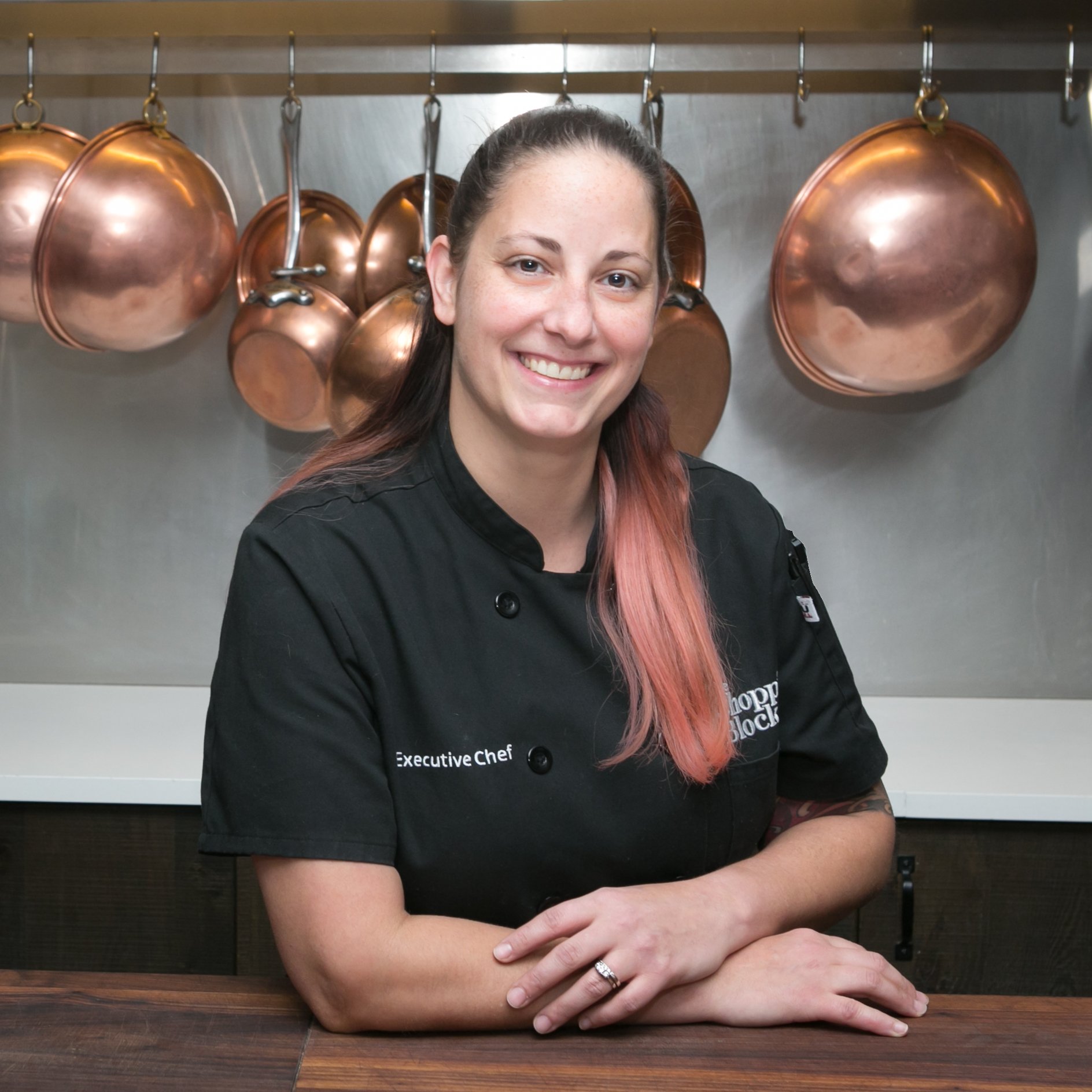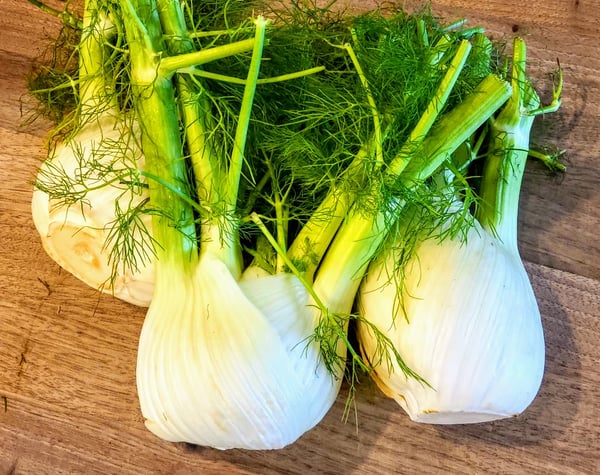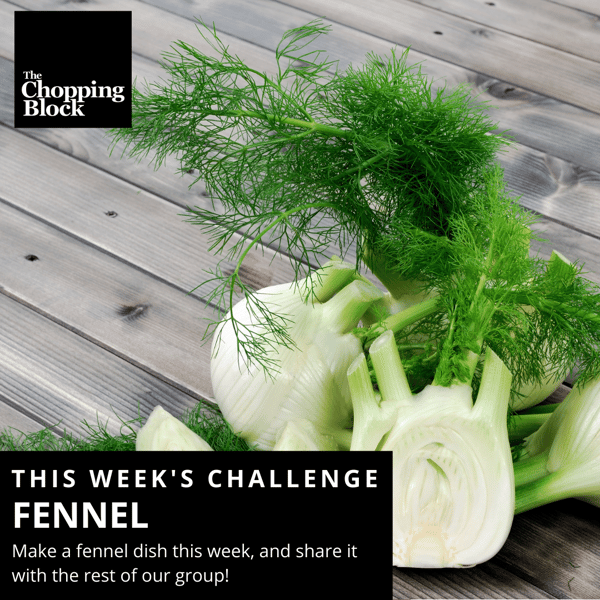It seems almost every year there is a vegetable that makes it way to the spotlight. Kale and cauliflower have had their day, and I am voting to make fennel the next big trend. Who else besides me thinks fennel is one of the most underrated vegetables out there? I always have some on hand in the fridge. If you’re not already cooking with it, you absolutely should be and you came to the right place to find out all about it. If you are not familiar with fennel, it has a fresh, aromatic anise or licorice flavor, and it can be eaten raw, sautéed, roasted, grilled or even added to soups and sauces. If you’ve never worked with it before, this funky-looking veggie might be intimidating from the outside, but don’t let it scare you.
What is Fennel?
Fennel is a member of the carrot family, though it’s not a root vegetable. The base of its long stalks weave together to form a thick, crisp bulb that grows above ground. Above the bulb, at the tip of the stalks, it has light, feathery leaves that resemble dill. When it goes to seed, fennel also produces small yellow flowers among the leaves. It is indigenous to the shores of the Mediterranean but has become widely naturalized in many parts of the world, especially on dry soils near the sea-coast and on riverbanks.
Fennel has all sorts of health benefits, too. It’s low in calories, but high in nutrients like dietary fiber, potassium, and vitamin C, to name a few. Anise seeds are regarded as assisting digestion and helping prevent intestinal gas. In India, anise seed is often offered to chew after the meal. I grew up eating raw fennel after our meals almost as a dessert for this very reason.
How to Work with Fennel
One of my favorite things about fennel is that its character changes depending on how you cut and cook it. The entire head of fennel from the fronds to the bulb are edible and once you know how to approach it, it’s easy to work with. My advice is to cut your fennel into quarters to cut the core out, and I always cut against the lines in the bulb to help break down the fibers to make it more palatable, especially for raw preparations.
If I’m craving raw fennel, I almost always thinly shave the bulb on my mandolin, if you shave it thin enough, you won’t even have to remove the core pieces. Then, you can marinate it in lemon juice, olive oil, and salt. This crisp, thinly sliced fennel is delicious on its own or as an ingredient in a salad.
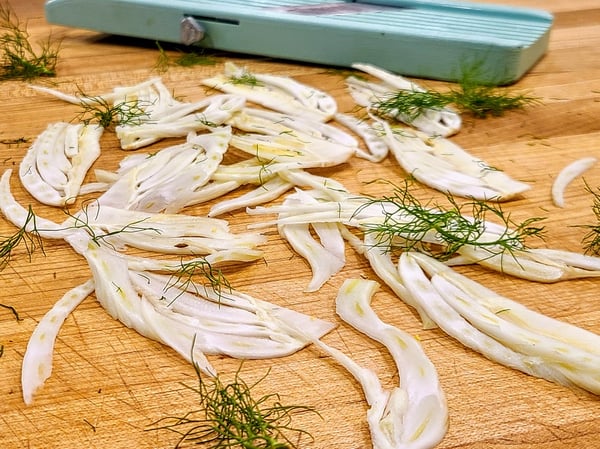 Shaving fennel is also a great move if you want to sauté it. The thin slices will melt and brown in the pan, taking on a delicious caramelized flavor like caramelizing onions.
Shaving fennel is also a great move if you want to sauté it. The thin slices will melt and brown in the pan, taking on a delicious caramelized flavor like caramelizing onions.
If I plan to roast or grill fennel, I slice it 1/2-inch wedges. First, I clip off the stalks so that I’m left with the white bulb. I cut it in half vertically and then cut each half into several wedges. I grill over medium high heat for char and then lower heat to cook through on the other side.
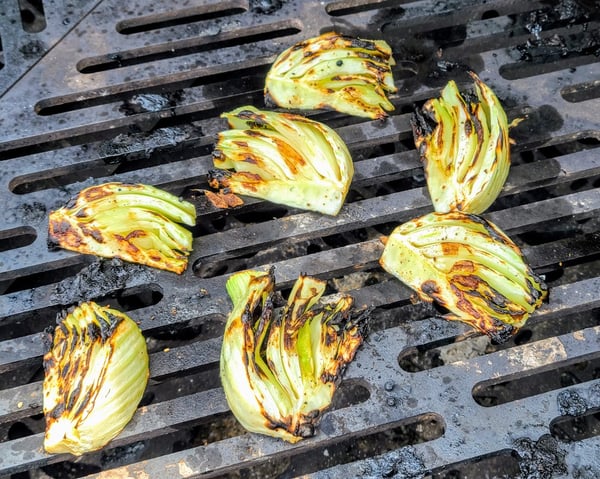 To roast the wedges, spread them cut-side-down on a baking sheet with a little space between each one. Toss them with olive oil, salt, and pepper, and roast at 425° degrees for 25-30 minutes, until the wedges are tender and caramelized around the edges.
To roast the wedges, spread them cut-side-down on a baking sheet with a little space between each one. Toss them with olive oil, salt, and pepper, and roast at 425° degrees for 25-30 minutes, until the wedges are tender and caramelized around the edges.
Recipes most often call for the bulb, but don’t toss those tops! Finely mince the fronds to use as an aromatic garnish for salads, soups, pasta and more. I also save the fennel stalks and leaves to use in homemade stocks, or I like to pickle them for a delicious snack.
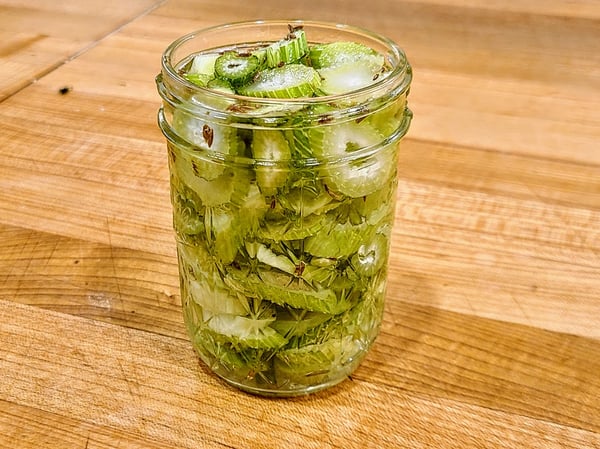 If you’re a cook who loves the flavor of black licorice, you probably use fennel and/or anise seed in your culinary masterpieces often. Many cooks use them interchangeably and may find them under either or both names in some grocers, which can be confusing. But are anise and fennel the same? If there is a difference between anise and fennel, what is it?
If you’re a cook who loves the flavor of black licorice, you probably use fennel and/or anise seed in your culinary masterpieces often. Many cooks use them interchangeably and may find them under either or both names in some grocers, which can be confusing. But are anise and fennel the same? If there is a difference between anise and fennel, what is it?
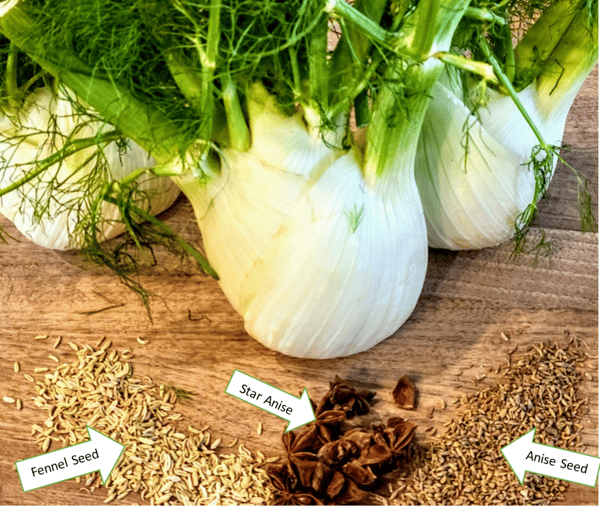
Fennel vs. Anise
Anise is an annual and fennel is a perennial. They both are used for their licorice flavor, which comes from the essential oil called anethole found in their seeds. As mentioned, many cooks use them fairly interchangeably, but there really is a difference in taste when it comes to fennel vs. anise. Anise seed is the more pungent of the two. It is often used in Chinese five spice powder and Indian panch phoran and imparts a heavier licorice flavor than fennel. Fennel also has a licorice flavor, but one that is less sweet and not as intense. If you use fennel seed in a recipe that calls for the use of anise, you just may need to use a little more of it to get the correct flavor profile.
Fennel seeds come from a bulbing plant (Florence fennel which is the most recognized bulb) that is eaten as a vegetable. In fact, the entirety of the plant, seed, fronds, greens, and bulb are edible. Anise seed comes from a bush that is grown specifically for the seed; no other part of the plant is eaten. So, the difference between anise and fennel is actually pretty major and despite its similar name, anise is not related to star anise which is another spice from a completely different family of plants.
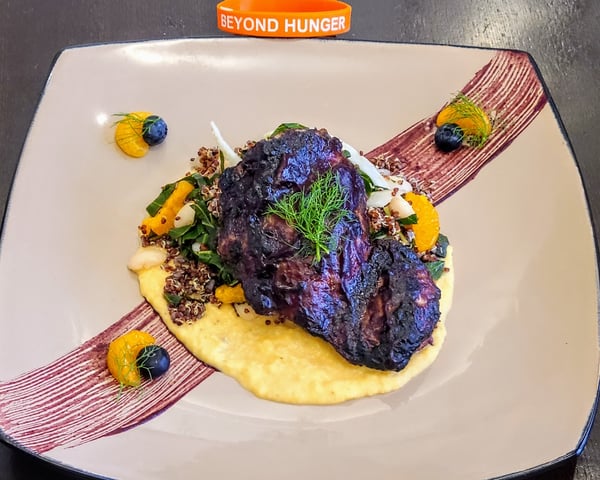 I am excited to share with you that I am participating in The Healthy Chef Challenge which is like a chopped chef competition where Beyond Hunger (a non-profit organization whose mission it is to reduce hunger through relief programs and awareness programs) provided me with pantry items of dried white beans, canned mandarin oranges, collard greens and a secret ingredient of ketchup in order to prepare a dish and compete against other chefs. You better believe that I added fennel to those ingredients to round out my dish! I had so much fun coming up with this recipe and I hope you will find it in your heart to go vote for me in the professional category or donate to this wonderful organization. If you would like to learn how to make this delicious and beautiful dish, The Chopping Block is hosting a virtual cooking class on Wednesday, July 14 at 6pm CST where I will demo this recipe and honor the winners from each category.
I am excited to share with you that I am participating in The Healthy Chef Challenge which is like a chopped chef competition where Beyond Hunger (a non-profit organization whose mission it is to reduce hunger through relief programs and awareness programs) provided me with pantry items of dried white beans, canned mandarin oranges, collard greens and a secret ingredient of ketchup in order to prepare a dish and compete against other chefs. You better believe that I added fennel to those ingredients to round out my dish! I had so much fun coming up with this recipe and I hope you will find it in your heart to go vote for me in the professional category or donate to this wonderful organization. If you would like to learn how to make this delicious and beautiful dish, The Chopping Block is hosting a virtual cooking class on Wednesday, July 14 at 6pm CST where I will demo this recipe and honor the winners from each category.
We have other classes that feature fennel, as well. Learn to make these moist and juicy grilled pork chops and fennel slaw in our Virtual Sunday Dinner on the Grill: Grilled Pork Chops this Sunday, June 27 at 4pm CST.
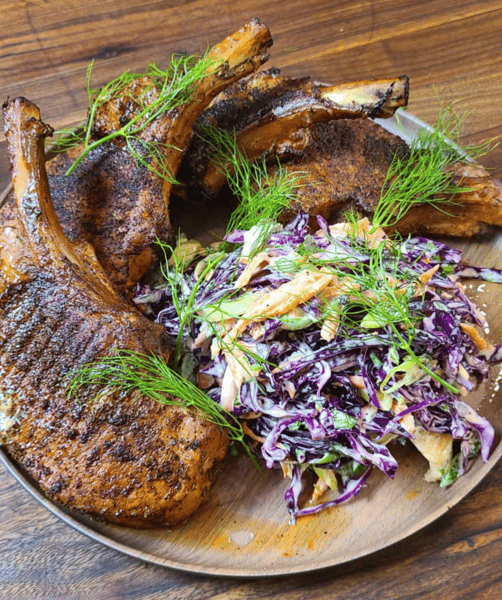 In our Essential Building Blocks class, you can learn to make Tuscan Braised Chicken with Kale, Fennel and Cannellini Beans with Roasted Garlic Farro as well as other fundamental cooking techniques in this seven-hour, in-person class at Lincoln Square.
In our Essential Building Blocks class, you can learn to make Tuscan Braised Chicken with Kale, Fennel and Cannellini Beans with Roasted Garlic Farro as well as other fundamental cooking techniques in this seven-hour, in-person class at Lincoln Square.
This week our #tcbcookingchallenge in our private Facebook group is fennel! I can’t wait to see what you all come up with to incorporate my favorite vegetable in your cooking adventures. Let’s make fennel the new kale, who’s with me?!


